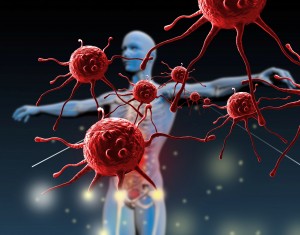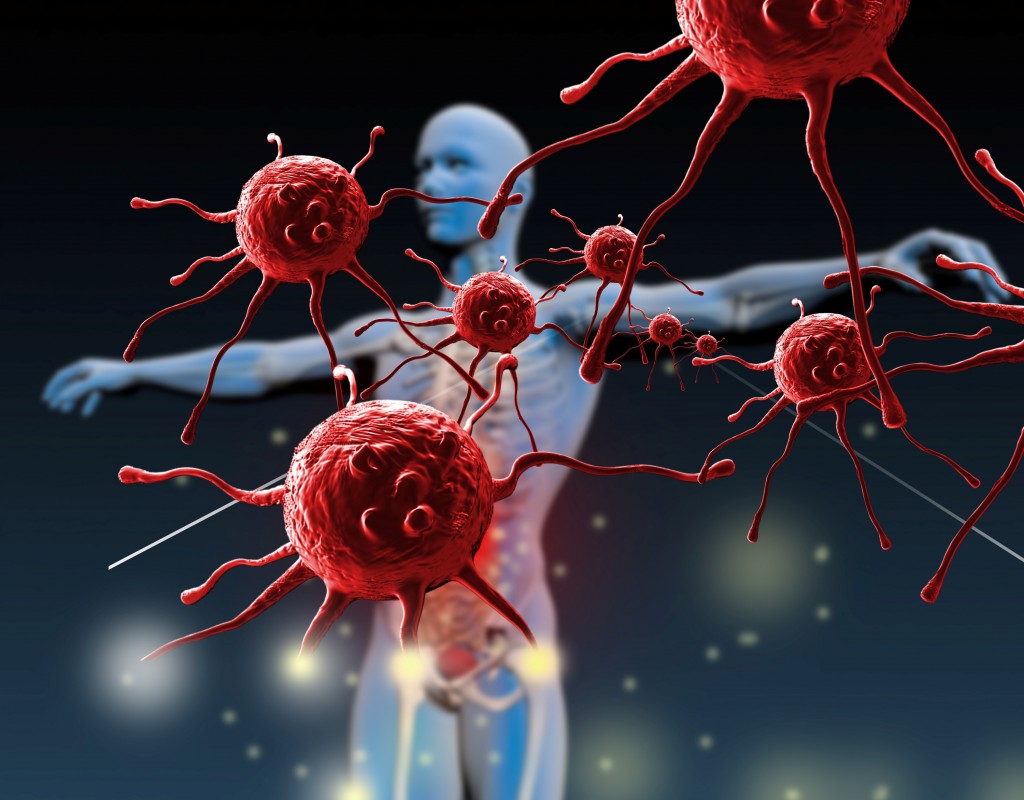
The hypothesis that our immune system plays a role in detecting and killing transformed (cancerous) cells was first proposed over 50 years ago, remaining little more than a theory until the early 2000’s. In the past decade this theory has not only gained traction as being a critical function of the immune system, but has also become the basis for a new approach for anti-cancer therapy. Both Bristol-Meyers Squibb1 and Merk have recently gained FDA approval for drugs (in these cases the drugs are actually antibodies) that will attempt to unleash the cancer fighting potential of our immune system.
By the early 1990’s it was well established that AIDS patients presented with rare tumors. AIDS compromises the immune system of the affected individual because the virus actually attacks a sub-population of T cells. The cancers most commonly found in AIDS patients were generally associated with viral infections, such as Kaposi’s sarcoma, which is caused by a human herpesvirus. This class of tumors in AIDS patients simply revealed that the weakened immune system in the patients was allowing other viruses to attack. However, AIDS patients were also found to be at a greater risk for other tumors, most notably lung cancer2, which were not caused by viral infection. This presented the first real data from humans suggesting that the immune system is actively repressing tumor formation. This was an important discovery, but still required a few strokes of genius to take us to where we are today.
In order to understand how these new anti-cancer drugs work, we need to think about what T cells do. Every cell in your body has a system of taking fragments of the peptides it is producing and presenting them on a molecule outside the cell. The purpose of this system is relatively straightforward: if a cell has been infected by a virus, this system will present a viral peptide, and a T cell recognizes this antigen, becomes activated and removes (read kills) the infected cell.
So how do we get T cells that are specific for viral antigens? In short, the answer is: really we don’t. When T cells are generated in your body they are negatively selected for ‘self’ antigens. This is an important step in T cell development, because T cells that recognize normal human antigens can lead to autoimmune diseases3. There is no real selection for ‘viral’ or ‘pathogenic’ antigens, and really there can’t be. Evolution wouldn’t let us so arrogant as to think that our genome could supply us with all the T cell receptors we would need throughout our lives. The random arrangements that generate the abundance of unique T cell receptors is what allows us to adapt to new pathogens. Genetically encoded T cell receptors would not be able to adapt to new threats, such as the Zika virus (stop here and check the room for mosquitos). At the end of the day, T cell selection in the thymus leaves us with repertoire of T cells that recognize a bunch of stuff so long as that stuff isn’t ‘self’.
As we all now recognize, most cancer cells contain many many mutations. These mutations can conceivably elicit a response from a T cell because they create so-called neoantigens. A neoantigen, simply put, is something a T cell could recognize as ‘not-self’ but originating from the human genome. For instance a normal melanocyte may present a peptide fragment from a protein encoded in the human genome. T cells that recognize this fragment would be selected against in the thymus and undergo apoptosis. However, in a malignant melanoma cell the gene that encodes this protein may be mutated. Now the small peptide presented from the gene product will have an altered amino acid sequence. This mutated peptide could elicit an immune response, provided there is a T cell that can bind its particular sequence.
So if this is the case, how do we ever get cancer at all? Well tumor cells are tricky little beasts, and they won’t be defeated so easily. In addition to the receptor on the T cell that recognize antigens as ‘not-self’ there are a host of other receptors that can modulate the reaction of T cell. Two of these receptors, CTLA-4 and PD-1, are strong negative regulators of T cell activation when engaged by their ligands. Sequencing data from human tumors has revealed that tumor cells express the ligands for these receptors at much higher levels than normal adult tissues4; thus, dampening the immune reaction to the tumor. The new drugs approved to treat melanoma block the receptors CTLA-4 and PD-1.
These are a very interesting class of drugs because they don’t actually do anything to the tumor. Most of us in biomedical research have spent decades trying to find the magic bullet that will stop tumor cells from growing (thus far unsuccessfully). However, these new drugs are simply stopping the tumor cell from evading your immune system. It should be noted that these new drugs were tested in melanoma patients, a disease known for it’s high mutation rate, and therefore, presenting the most neoantigens. It remains to be seen how these therapies will work in a tumor with a lower mutation rate. However, the results from the phase III trials were quite remarkable for patients with advanced melanoma, and these treatments are now considered part of the first line of therapy. Another question that will need to be tested is why these drugs elicit a disparity of responses in patients. Is the immune system in some people better equipped to fight tumors than others? Are there specific mutations in a tumor that make it a target for the immune system? Like all new therapies that show promising results, we are now left to find a way to identify the patients who have the right setting for the drugs to be most effective.
- Borghaei H, Paz-Ares L, Horn L, et al. Nivolumab versus Docetaxel in Advanced Nonsquamous Non-Small-Cell Lung Cancer. N Engl J Med. 2015;373(17):1627-1639. doi:10.1056/NEJMoa1507643.
- Corthay A. Does the immune system naturally protect against cancer? Front Immunol. 2014;5:197. doi:10.3389/fimmu.2014.00197.
- Lucas B, Germain RN. T-cell repertoire: political correctness in the immune system. Curr Biol. 1996;6(7):783-787.
- Iwai Y, Ishida M, Tanaka Y, Okazaki T, Honjo T, Minato N. Involvement of PD-L1 on tumor cells in the escape from host immune system and tumor immunotherapy by PD-L1 blockade. Proc Natl Acad Sci U S A. 2002;99(19):12293-12297. doi:10.1073/pnas.192461099.
